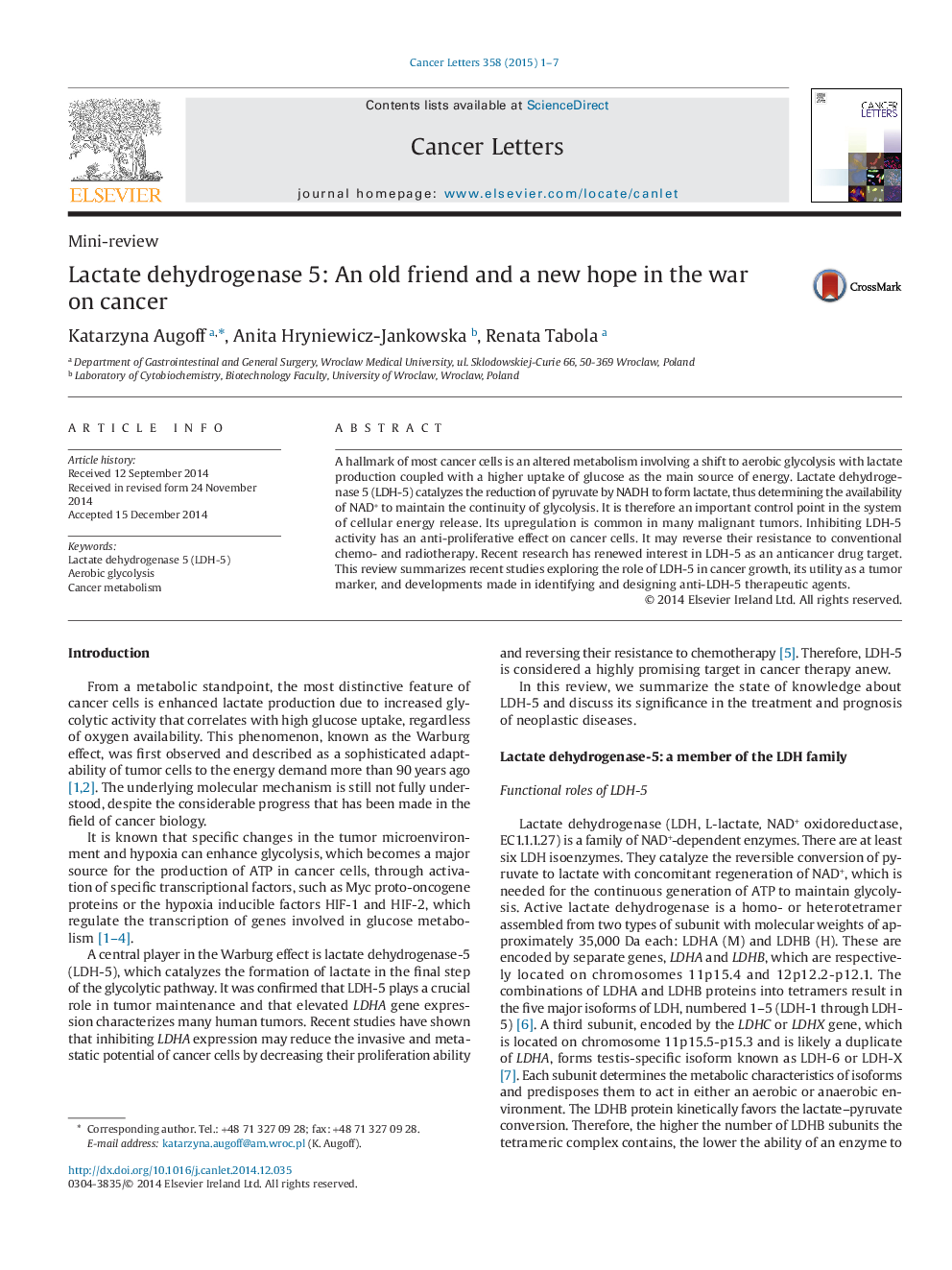| Article ID | Journal | Published Year | Pages | File Type |
|---|---|---|---|---|
| 2116147 | Cancer Letters | 2015 | 7 Pages |
•In this mini review we describe the functional roles of lactate dehydrogenase 5 (Ldh-5) in the development of cancer.•We show diagnostic and prognostic significance of total LDH activity and LDH isoform patterns in neoplastic diseases.•We describe LDH-5 as a promising therapeutic target for cancer treatment.•We summarize novel synthetic and natural products with LDH-5 inhibitory properties and discuss their therapeutic potential.
A hallmark of most cancer cells is an altered metabolism involving a shift to aerobic glycolysis with lactate production coupled with a higher uptake of glucose as the main source of energy. Lactate dehydrogenase 5 (LDH-5) catalyzes the reduction of pyruvate by NADH to form lactate, thus determining the availability of NAD+ to maintain the continuity of glycolysis. It is therefore an important control point in the system of cellular energy release. Its upregulation is common in many malignant tumors. Inhibiting LDH-5 activity has an anti-proliferative effect on cancer cells. It may reverse their resistance to conventional chemo- and radiotherapy. Recent research has renewed interest in LDH-5 as an anticancer drug target. This review summarizes recent studies exploring the role of LDH-5 in cancer growth, its utility as a tumor marker, and developments made in identifying and designing anti-LDH-5 therapeutic agents.
